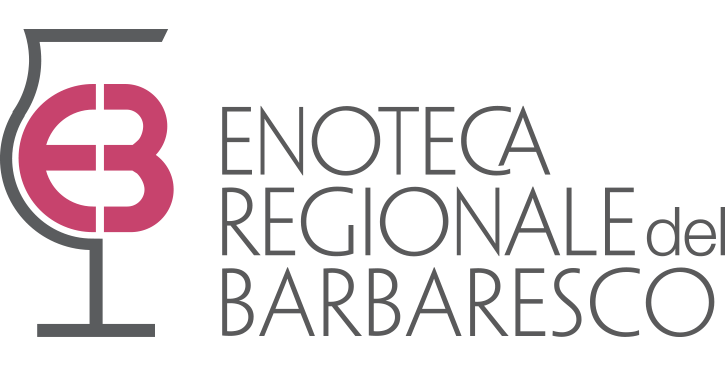BARBARESCO
Denominazione d’Origine Controllata e Garantita – D.O.C.G.
Barbaresco is an especially prestigious red wine, with its superior quality officially recognised by Italian law; it became a D.O.C. wine in 1966 and D.O.C.G. in 1980.
It originated with the Nebbiolo grape variety grown in the sunny, hillside vineyards of the Piemontese villages of Barbaresco, Treiso and Neive in the province of Cuneo, as well as in San Rocco Seno d’ Elvio close to Alba.
There are 682.26 hectares devoted to Nebbiolo in the area, which on average produce 4,455,000 bottles of Barbaresco each year.
Download here the Barbaresco technical sheet
| Designation: | BARBARESCO D.O.C.G. since 1980 (D.O.C. since 1966) |
| Production zone: | In and around Barbaresco, Neive, Treiso and also San Rocco Seno d’Elvio, a part of the municipality of Alba. |
| Grape variety: | Nebbiolo |
| Maximum grape yield per hectare: | 80 tons |
| Minimum alcohol content: | 12% Vol. |
| Minimun legal ageing: | 26 months starting from the 1 st of November after the harvest, 9 of which in wood barrels. |
| Riserva: | The term “Riserva” can be used on the label when the wine has been cellared for 50 months, calculated once again from the 1 st of November after the harvest. |
| Aging potential: | from 8 to 25 years depending on the year. |
| Tasting notes: | Red-garnet with orange highlights; ethereal, intense and agreeable perfume; dry, full-bodied and delicate, velvety taste; correct tannins. |
| Recommended pairings: | Traditionally served with typical Piemontese dishes; it is ideal with game, hearty meat dishes and well-aged cheeses. |
| Served: | In wine glasses for full-bodied reds at about 18°C. |
DISCIPLINARE DI PRODUZIONE DEI VINI A DENOMINAZIONE DI ORIGINE CONTROLLATA E GARANTITA “BARBARESCO”
Articolo 1
Denominazione e vini
1. La denominazione di origine controllata e garantita «Barbaresco» è riservata ai vini rossi che rispondono alle condizioni ed ai requisiti stabiliti dal presente disciplinare di produzione, per le seguenti tipologie: – «Barbaresco»; – «Barbaresco» riserva; – «Barbaresco» e «Barbaresco» riserva, con una delle «menzioni geografiche aggiuntive» riportate al successivo art. 7 alle quali può essere aggiunta la menzione «vigna» seguita dal relativo toponimo alle condizioni stabilite dall’art. 7, comma 5.
2. Le delimitazioni delle «menzioni geografiche aggiuntive» sono definite tramite l’allegato in calce al presente disciplinare di produzione.
Download here the disciplinary
In 2007, after a work that lasted years, the MGA (litterally Additional Geographical Mentions) of Barbaresco DOCG, the first wine in Italy to claim this honour, were finally defined by law of the Italian Parliament. These are 66 specific denominations that refer not only to the area or the vine but directly to the individual vineyard, officially delimited area of production located within the Barbaresco DOCG appellation and, essentially, the equivalent of the French term “crù”. The entire production territory was divided into individual portions defined using historical names and place names (many of these claimed by producers and farmers in public hearings or attested on maps, labels and official acts) and establishing boundaries between them. The Enoteca Regionale del Barbaresco, thanks to the work carried out by the Enogea Studio, has made some carts which describe every single mention for its geographical, geological and sensory characteristics, together with a detailed land register for property. Below is the list of mentions divided by Common.
Below the list of all the geographic mentions in the Barbaresco’s area divided by municipality:
Alba:
Meruzzano, Montersino, Rizzi, Rocche Massalupo
Barbaresco:
Asili, Cà Grossa, Cars, Cavanna, Cole, Faset, Martinenga, Montaribaldi, Montefico, Montestefano, Muncagota, Ovello, Pajè, Pora, Rabajà, Rabajà-bas, Rio Sordo, Roccalini, Roncaglie, Roncagliette, Ronchi, Secondine, Tre Stelle, Trifolera, Vicenziana
Neive:
Albesani, Balluri, Basarin, Bordini, Bric Micca, Bricco di Neive, Canova, Cottà, Currà, Fausoni, Gaia-Principe, Gallina, Marcorino, Rivetti, San Cristoforo, San Giuliano, Serraboella, Serracapelli, Serragrilli, Starderi
Treiso:
Ausario, Bernardot, Bricco di Treiso, Casot, Castellizzano, Ferrere, Garassino, Giacone, Giacosa, Manzola, Marcarini, Meruzzano, Montersino, Nervo, Pajorè, Rizzi, Rombone, San Stunet, Valeirano, Vallegrande



